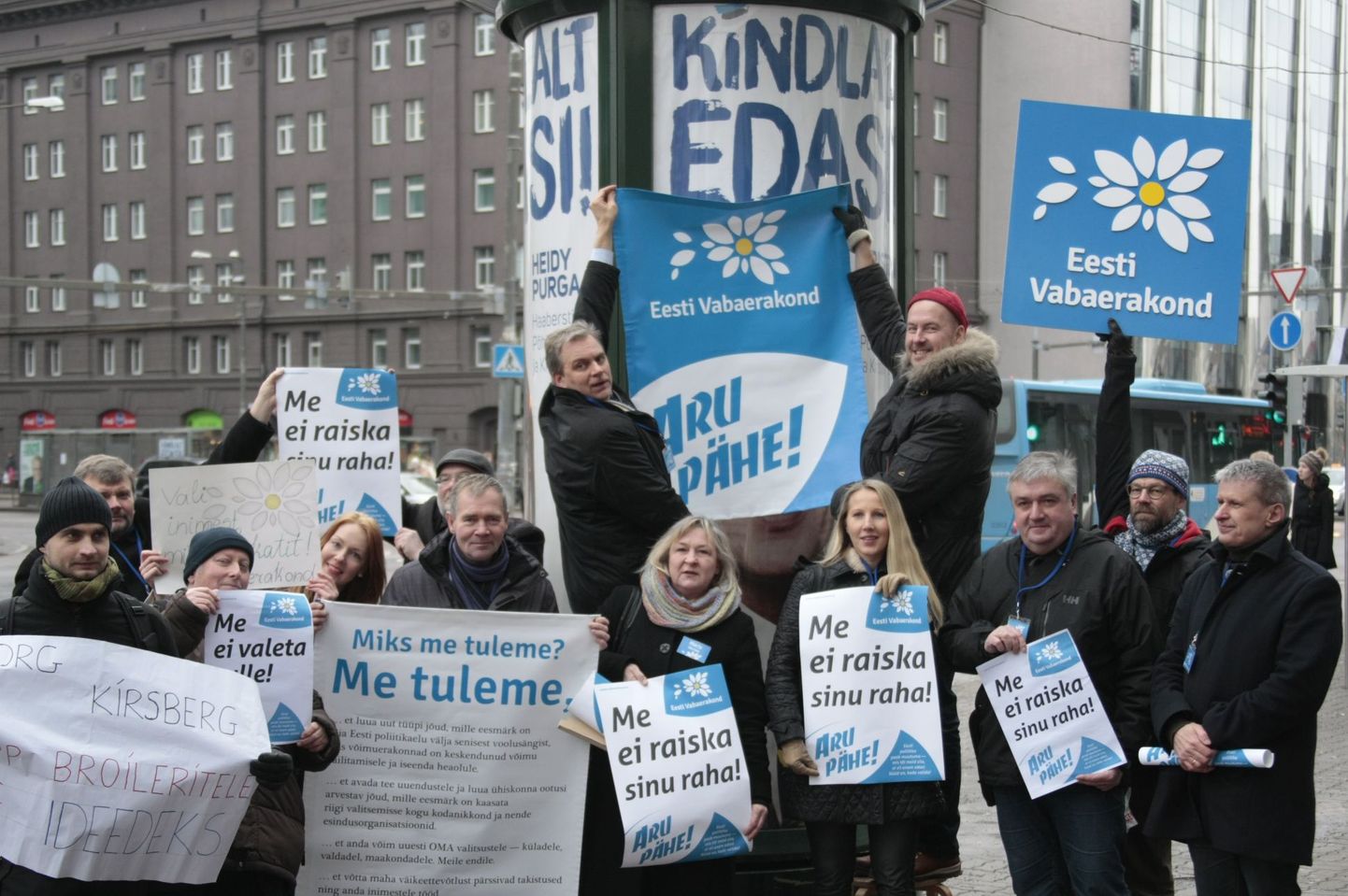
A fresh TNS EMOR survey ordered by Postimees on party ratings serves surprise with joy to newcomers.

A fresh TNS EMOR survey ordered by Postimees on party ratings serves surprise with joy to newcomers.
The January poll highlights boosted popularity of two small parties, Estonian Free Party (Vabaerakond) and Conservative People’s Party of Estonia (EKRE) – as already favoured by eight and five percent of voters, respectively.
«They’ve been in the shadows, but in the run-up to the elections they have gained quite much media attention thanks to full lists of candidates, especially the Free Party,» EMOR analyst Aivar Voog told Postimees. «The Free Party has been boosted by the large numbers of well-known people running in their list.»
According to Mr Voog, the weakness for small parties is the uneven level in varying districts. Especially so with EKRE which only has two strong candidates – Mart and Martin Helme. «The large parties have worthy candidates to spare, everywhere,» observed Mr Voog. «But at least the image side of small parties has considerably grown – let’s wait and see the February poll with the candidates added, then the proportions with others will stand out better,» he added.
As also pointed out by Mr Voog, the small parties have been helped by the overall poor image of parties. «This is so in all of Europe; however, the autumn poll revealed that, in the case of Estonia, this has dropped from the usual 20 plus percent to 13 percent,» explained Mr Voog.
As compared to December, The steepest fall has befallen Reform Party – from 32 percent to 25 percent. They have kept their leading position, though. «Their drop is nothing new – before the 2011 elections, their popularity also stood much higher at the end of 2010 than at the beginning of the election year,» recalled Mr Voog, adding that this time Reform Party never reached the four-years-back heights of over 40 percent popularity.
When it comes to the several-percent drop of soc dems (21 to 18 percent) and the stability of IRL (16 to 15 percent), the analyst attributes this to the rise of small parties. «For the soc dems, the weakness is their rating has only been relatively high for a couple of years, and, as compared to Reform party for instance, they have substantially fewer loyal voters,» said Mr Voog. «With EKRE voters, soc dems do not overlap much.»
Despite its earnest media ad campaign, IRL has not been able to boost popularity. According to Mr Voog, the IRL problem is its voters overlapping a lot with both Free Party and EKRE, as also with Reform Party.«IRL has lots of closer competitors and it is therefore harder for them to maintain their position,» suggested Mr Voog.
The Centre Party stable at 22 to 23 percent is equal to 2011 election result.
All in all, 1,605 election-aged citizens 18 and older were questioned, of these 446 in homes and 1,163 over the Internet.
The interviews were performed from January 15th to 21st, 2015.